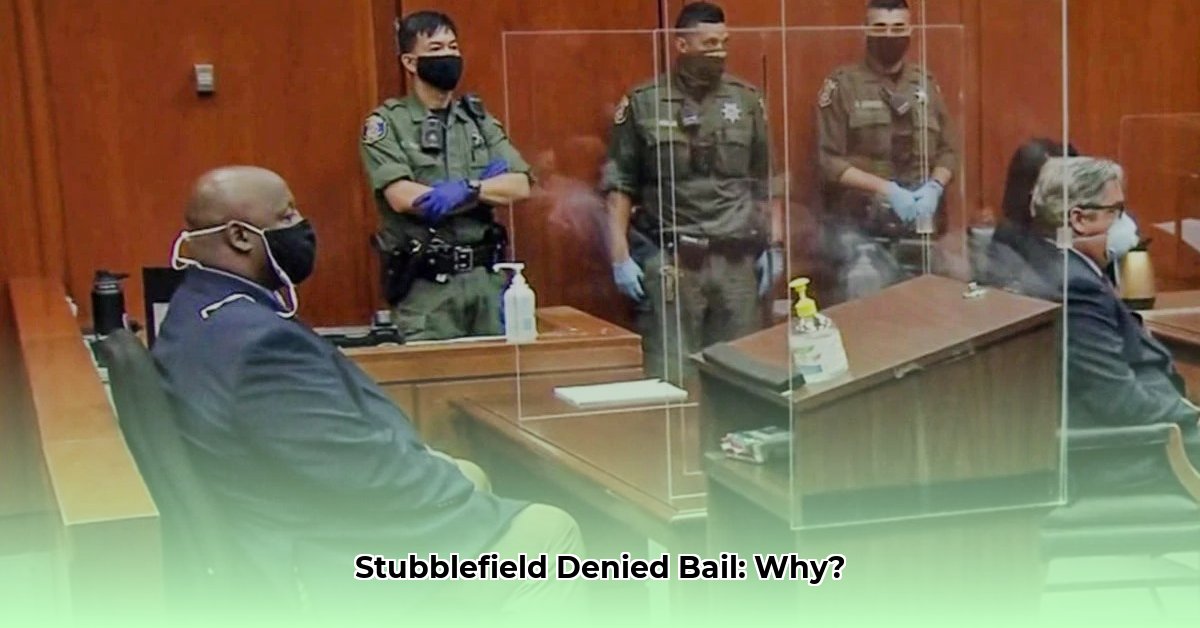Former NFL star Dana Stubblefield remains incarcerated despite having his 2020 rape conviction overturned due to racial bias under California’s Racial Justice Act. A Santa Clara County judge denied his bail request, citing jurisdictional limitations, leaving Stubblefield in legal limbo.
The Bail Denial: A Jurisdictional Tangle
Stubblefield’s release was denied on January 17, 2025, by Judge Hector Ramon, who presided over the original trial. However, Judge Ramon explained that he lacked the authority to grant bail because the case was still technically under the jurisdiction of the Sixth District Court of Appeal, which overturned the conviction in December 2024. The formal transfer of jurisdiction, through a document called a remittitur, wasn’t expected until February 2025.
Legal Arguments and Implications
Stubblefield’s attorney, Ken Rosenfeld, argued that his client, now legally considered innocent, should be released immediately. “A legally innocent man is sitting in prison,” Rosenfeld stated, arguing that the judge misinterpreted jurisdictional rules. The District Attorney’s office, however, successfully argued for Stubblefield’s continued detention, likely due to concerns about public safety, though their precise reasoning remains unclear. This raises questions about the balance between public safety and the presumption of innocence when a conviction is overturned.
This case underscores the complexities of the California Racial Justice Act (CRJA), which allows individuals to challenge convictions based on racial bias. While the CRJA secured Stubblefield a new legal standing, the specifics of its interaction with existing bail procedures appear to have resulted in his continued imprisonment. This may suggest a need for clearer legal guidelines on pre-remittitur release, particularly in cases involving overturned convictions.
Timeline of Events
| Date | Event |
|---|---|
| 2020 | Stubblefield found guilty of rape; CRJA enacted |
| December 2024 | Conviction overturned due to racial bias (CRJA) |
| January 17, 2025 | Stubblefield denied bail |
| February 2025 | Expected completion of the remittitur process |
What’s Next and the Broader Impact
Once the remittitur is issued, Judge Ramon will regain jurisdiction. The District Attorney will then decide whether to retry Stubblefield. This decision will likely hinge on an evaluation of the remaining evidence and the feasibility of a successful prosecution in light of the racial bias concerns raised by the appeals court.
This case has drawn attention to the potential for procedural delays within the CRJA framework. While the act is designed to address racial bias and promote fairness, questions remain about unintended consequences such as Stubblefield’s continued detention despite being legally innocent. Legal scholars are observing this case closely, as it may influence future interpretations of the CRJA and prompt revisions to related legal procedures. Some suggest that clarifying pre-remittitur release protocols could prevent similar situations in the future. This case also prompts broader discussion on the balance between legal procedure, efficiency, and just outcomes.
Stubblefield’s situation presents a significant test for the CRJA and raises vital questions about the intersection of racial justice, due process, and the practical functioning of the legal system. Further analysis is needed to determine the long-term impact of this case on both the CRJA’s application and the ongoing discourse around criminal justice reform in California. There is no easy answer, and the continuing evolution of legal understanding and application of the CRJA will depend, in part, on cases like this one.







